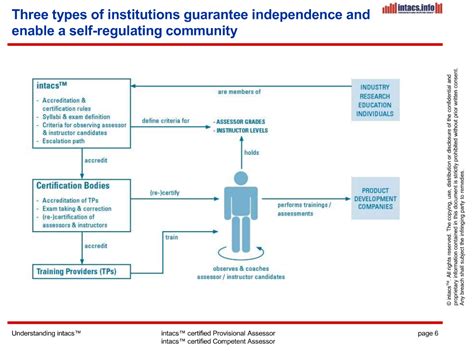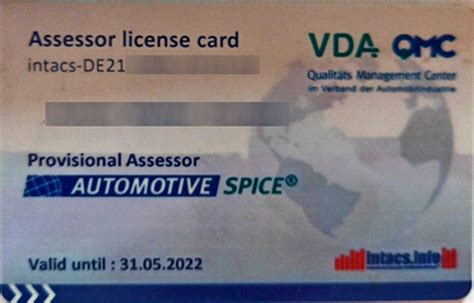Introduction
In the automotive industry, software development has become increasingly crucial as vehicles continue to integrate more advanced technologies and features. To ensure the quality, safety, and reliability of automotive software, the Automotive SPICE (ASPICE) standard has been developed. ASPICE is a process assessment model that provides a framework for evaluating and improving software development processes in the automotive domain. This article will explore the requirements and implications of ASPICE certification for auto software developers.
What is ASPICE Certification?
ASPICE certification is a recognition of an organization’s adherence to the Automotive SPICE standard. It demonstrates that the organization has implemented and follows best practices in software development processes, ensuring the delivery of high-quality software for automotive applications.
The ASPICE standard is based on the ISO/IEC 15504 (SPICE) standard and has been tailored specifically for the automotive industry. It covers various aspects of software development, including project management, requirements engineering, design, implementation, testing, and maintenance.
ASPICE Process Reference Model
The ASPICE Process Reference Model (PRM) defines a set of processes that are essential for automotive software development. These processes are grouped into three main categories:
- Primary Life Cycle Processes
- Acquisition
- Supply
- System Engineering
- Software Engineering
-
Support
-
Organizational Life Cycle Processes
- Management
- Process Improvement
- Resource and Infrastructure
-
Reuse
-
Supporting Life Cycle Processes
- Quality Assurance
- Verification
- Validation
- Joint Review
- Audit
- Problem Resolution
Each process in the PRM is further divided into base practices, which are the essential activities that need to be performed to achieve the process outcomes.

Benefits of ASPICE Certification
Obtaining ASPICE certification offers several benefits to auto software developers and their organizations:
-
Improved Software Quality: By following the ASPICE standard, organizations can enhance the quality of their software products. The structured processes and best practices outlined in ASPICE help in identifying and mitigating risks, reducing defects, and improving overall software reliability.
-
Increased Customer Confidence: ASPICE certification demonstrates an organization’s commitment to delivering high-quality software. It provides customers with the assurance that the software development processes adhere to industry standards and best practices, increasing their confidence in the organization’s capabilities.
-
Competitive Advantage: In the automotive industry, ASPICE certification is often a requirement for suppliers and partners. Having the certification can give organizations a competitive edge when bidding for projects or establishing partnerships with automotive manufacturers.
-
Continuous Process Improvement: ASPICE promotes a culture of continuous process improvement. The assessment model helps organizations identify areas for improvement and provides guidance on implementing changes to enhance their software development processes.
-
Risk Mitigation: ASPICE emphasizes risk management throughout the software development lifecycle. By identifying and addressing potential risks early in the development process, organizations can minimize the impact of issues and ensure the timely delivery of software products.

Requirements for ASPICE Certification
To achieve ASPICE certification, auto software developers and their organizations must meet certain requirements:
-
Process Implementation: Organizations must implement the processes defined in the ASPICE Process Reference Model (PRM). This involves aligning their software development practices with the base practices outlined in the PRM.
-
Evidence of Compliance: Organizations need to provide evidence that demonstrates their adherence to the ASPICE processes. This evidence can include documentation, records, and artifacts generated throughout the software development lifecycle.
-
Assessment: An ASPICE assessment is conducted by certified assessors to evaluate the organization’s processes against the ASPICE standard. The assessment involves interviews, document reviews, and observations to gather evidence of process implementation and compliance.
-
Continuous Improvement: ASPICE certification is not a one-time achievement. Organizations are expected to continuously improve their processes based on the assessment results and feedback. Regular assessments are conducted to ensure ongoing compliance and identify areas for further improvement.

Implications of ASPICE Certification
Obtaining ASPICE certification has several implications for auto software developers and their organizations:
-
Process Standardization: ASPICE certification requires organizations to standardize their software development processes. This standardization ensures consistency across projects and teams, facilitating better collaboration and knowledge sharing.
-
Resource Allocation: Implementing ASPICE processes may require organizations to allocate additional resources, such as personnel, training, and tools. Organizations need to plan and budget for these resources to support the certification efforts.
-
Documentation: ASPICE places a strong emphasis on documentation throughout the software development lifecycle. Organizations need to establish and maintain comprehensive documentation practices to provide evidence of compliance and facilitate knowledge transfer.
-
Skill Development: ASPICE certification may require software developers to acquire new skills and knowledge related to the standard’s processes and practices. Organizations should invest in training and professional development programs to ensure their teams have the necessary competencies.
-
Supplier Management: ASPICE certification extends to an organization’s suppliers and partners involved in the software development process. Organizations need to establish processes for supplier selection, evaluation, and management to ensure compliance with ASPICE requirements.
ASPICE Certification Process
The ASPICE certification process typically involves the following steps:
-
Gap Analysis: Organizations perform a self-assessment or engage an external consultant to identify gaps between their current processes and the ASPICE requirements. This helps in understanding the areas that need improvement.
-
Process Improvement: Based on the gap analysis, organizations develop and implement process improvement plans to align their practices with the ASPICE standard. This may involve updating documentation, training personnel, and implementing new tools or methodologies.
-
Formal Assessment: Once the organization is ready, a formal ASPICE assessment is conducted by certified assessors. The assessment evaluates the organization’s processes against the ASPICE PRM and assigns capability levels to each process.
-
Certification: If the organization meets the required capability levels, it is awarded the ASPICE certification. The certification is valid for a specific period, typically three years, after which re-certification is required.
-
Continuous Improvement: Organizations should continue to monitor and improve their processes even after achieving certification. Regular assessments and audits are conducted to ensure ongoing compliance and identify areas for further enhancement.
Frequently Asked Questions (FAQ)
- What is the difference between ASPICE and ISO 26262?
-
ASPICE focuses on the software development processes, while ISO 26262 is a functional safety standard that covers the entire product development lifecycle, including hardware and system-level considerations. ASPICE can be used to support the software-related requirements of ISO 26262.
-
Is ASPICE certification mandatory for auto software developers?
-
ASPICE certification is not mandatory by law, but it is often a requirement imposed by automotive manufacturers on their suppliers and partners. Having ASPICE certification demonstrates an organization’s commitment to quality and can provide a competitive advantage in the automotive industry.
-
How long does the ASPICE certification process take?
-
The duration of the ASPICE certification process varies depending on the organization’s size, complexity, and current process maturity. It can range from several months to a year or more, including the time required for process improvement initiatives and the formal assessment.
-
What are the different capability levels in ASPICE?
- ASPICE defines six capability levels for each process:
- Level 0: Incomplete
- Level 1: Performed
- Level 2: Managed
- Level 3: Established
- Level 4: Predictable
- Level 5: Optimizing
-
The capability levels indicate the degree to which a process is implemented and institutionalized within the organization.
-
Can ASPICE certification be applied to agile software development methodologies?
- Yes, ASPICE can be applied to agile methodologies such as Scrum, Kanban, or Lean. The ASPICE PRM provides a framework for process assessment and improvement, regardless of the specific development methodology used. Organizations can map their agile practices to the ASPICE processes and demonstrate compliance through appropriate evidence and documentation.
Conclusion
ASPICE certification is a valuable recognition for auto software developers, demonstrating their commitment to quality, safety, and reliability in automotive software development. By adhering to the ASPICE standard, organizations can improve their software development processes, enhance customer confidence, and gain a competitive advantage in the industry.
Achieving ASPICE certification requires a significant investment in terms of time, resources, and effort. Organizations must implement the processes defined in the ASPICE PRM, provide evidence of compliance, and undergo formal assessments. However, the benefits of ASPICE certification, such as improved software quality, risk mitigation, and continuous process improvement, make it a worthwhile endeavor for auto software developers.
As the automotive industry continues to evolve and software becomes increasingly critical, ASPICE certification will likely become more prevalent and essential. Auto software developers who embrace the ASPICE standard and strive for certification will be well-positioned to meet the demanding requirements of the industry and deliver high-quality software solutions for the vehicles of the future.

No responses yet